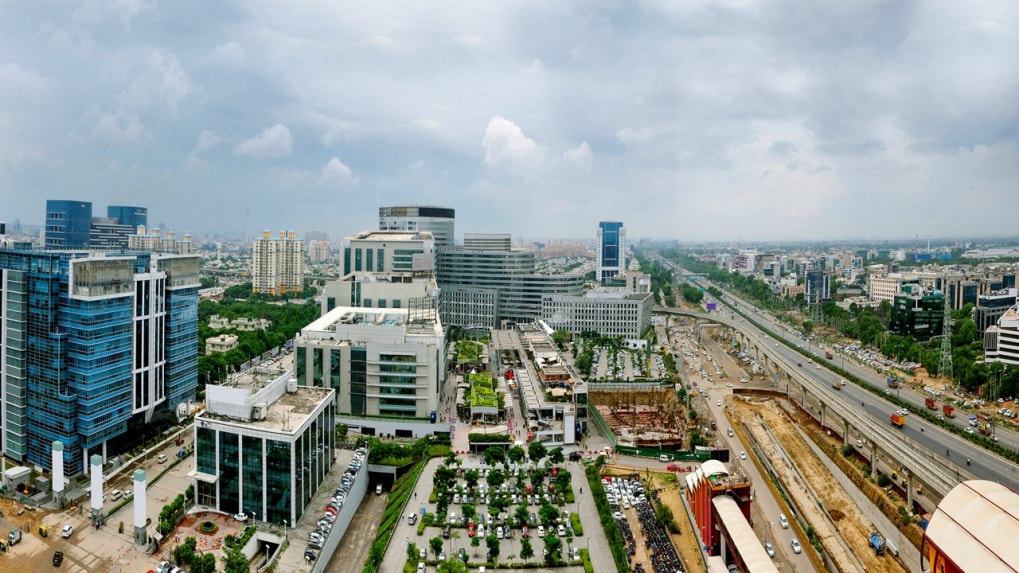Brand Makers
Dil Ka Jod Hai, Tootega Nahin

Gurugram, often marketed as India’s global city and corporate hub, sits uneasily between two worlds: the gated affluence of Aralias and Magnolias, and the broken civic infrastructure just beyond their walls. As India’s urban story is rewritten in glass towers and luxury condos, Gurugram’s contradictions have become too stark to ignore.
The global city that isn’t
Asked about Gurugram’s global city positioning, Suhel Seth, Founder & Managing Partner of Counselage India, replied, “It is not a global city, it is a global slum,” he said. “It has expensive apartments with the poorest infrastructure, and it is a blot and a shame on India’s desire to be a global player. Every passing day, Gurugram is sinking, but it is also enabling and forcing Brand India to sink.”
Seth argued that unless political leadership cracks the whip, Gurugram’s repeated civic breakdowns will become not just a domestic embarrassment but an international headline. “We are not creating anything worthwhile by tom-tomming Gurugram as a smart city. It is a smart city with unsmart leaders. The governance sucks, the people there are callous, and there is no accountability.”
The lived reality
For long-time resident Lloyd Mathias, investor & business strategist, who has lived in Gurugram since 2002, the cracks are visible every day. “The biggest challenge right now is that Gurugram has these little islands of affluence — state-of-the-art condos, gyms, infinity pools but the moment you step out, you literally reach heartland Haryana. Virtually no sewage systems, no drainage, filth on the roads, and barely any public transport,” he said.
Basic services remain unreliable. “Power transmission is so bad that almost every condo has to have backup generators. Security is a concern — it’s not the kind of place you’d let a woman drive alone after dusk. And sanitation collapses with just half an hour’s rain,” Mathias added. The civic fragility is “embarrassing even in a third world country… sometimes embarrassing even compared to a Mumbai.”
And yet, Gurugram’s real estate continues to defy gravity. “At one level, prices shoot up because it’s a big place for work. Everyone wants to live close to their workplace. Two, the condos are very nice and spacious compared to Mumbai. And three, proximity to Delhi airport,” Mathias explained. “In a sense, these ensure prices stay artificially high.”
Speculation over stability
Developers and investors see Gurugram differently — less as a broken city, more as a growth machine “There is a host of interlocking factors that propel Gurgaon’s demand,” said Sanjay Daga, CEO and MD of Anex Advisory. “Beginning with its proximity to Delhi to a consistent flow of high-income professionals from the corporate and expat community. Investors consider Gurgaon as crucial to NCR’s growth story, and large developers target the luxury and premium segments.”
The numbers speak for themselves. “Along the Dwarka Expressway, rates jumped from Rs 9,434 per sq. ft in 2020 to Rs 18,668 per sq. ft in 2024 on an average. Equally striking is the unabated demand seen in the absorption rate with takers for around 16,500 units up against about 16,000 new launches. A similar story is visible along the Southern Peripheral Road corridor, where projects worth nearly Rs 50,000 crore have been launched since 2022 while another Rs 50,000 crore has remained in the pipeline,” he said.
This, despite the floods. “Despite instances of severe flooding following 133 mm of rainfall overwhelming a drainage system designed for barely 10 mm an hour, homebuyers are not really deterred,” Sanjay noted. “A large extent of this momentum is being pivoted by a combination of corporate occupancy and speculative investor activity.”
Bangalore vs Gurugram
For those who have lived in both cities, the contrast is instructive. “In Bangalore, your elevator pitch might casually come up in line at a coffee counter,” said Arjit Sachdeva, Co-founder and CTO of VDO.AI. “Conversations about AI, product-market fit, or your next build spill into cafes and weekend catchups. In Gurgaon, the mindset is different. Conversations often revolve around real estate, finance, or politics. It’s faster, more transactional, and hustle culture is alive and unapologetic.”
Sachdeva described it as a head-versus-heart choice. “If I had to spend the rest of my life in one city, it would probably be Gurgaon. Not because it’s better — in many ways it’s not. Gurgaon fails at planning, but it works for me. It’s fast, it’s familiar, and weirdly enough, it still feels like home. For peace of mind, it’s Gurgaon. For like-minded tech professionals, I would say Bangalore.”
Each city has its peculiar failures. “In Bangalore, you learn the patience that comes from being stuck in the same 1 km stretch for an hour. In Gurgaon, patience looks different: it’s waiting three years for a promised road construction or adjusting to the fact that a newly built road might still flood if it rains hard. Bangalore tests your patience, Gurgaon tests your expectations,” Sachdeva said.
Can Gurugram be reimagined?
Despite the frustration, Mathias believes it is possible. “Gurugram doesn’t lack funds. It requires political will and proper urban planning. Every new project should ensure the width of roads, stormwater drains, and sewage systems are adequate. And there has to be a conscious attempt to build public transport infrastructure. Until these things are in place, it’ll continue to break down every monsoon.”
For now, Brand Gurugram is held together less by civic resilience than by corporate demand and speculative capital. Its contradictions — luxury towers rising above flooded roads remain its defining image. Whether it can move from fragile aspiration to sustainable urban brand depends on whether political will can match economic momentum.
"The raucous, almost deafening, cuss words from the heartland that Piyush Pandey used with gay abandon turned things upside down in the old world order."
Read MoreFrom OpenAI’s ChatGPT-powered Atlas to Microsoft’s Copilot-enabled Edge, a new generation of AI-first browsers is transforming how people search, surf and interact online — and reshaping the future of digital advertising.